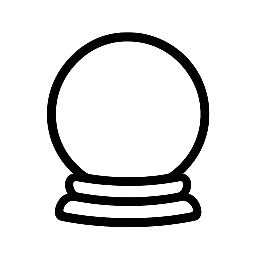Unlocking the Secrets of the Universe: Exploring the Tree of Life in Kabbalah
For centuries, the mystics and sages of Kabbalah have sought to unlock the secrets of the universe, seeking to understand the hidden patterns and codes that govern the cosmos. At the heart of this ancient wisdom lies the Tree of Life, a intricate and complex diagram that represents the fundamental structure of the universe. In this article, we will delve into the mysteries of the Tree of Life, exploring its symbolism, its significance in Kabbalah, and the insights it offers into the nature of reality.
Introduction to the Tree of Life
The Tree of Life is a graphical representation of the interconnectedness of the universe, consisting of ten nodes or sephiroth, which are connected by a network of paths. Each sephirah represents a distinct aspect of the divine, with the top sephirah, Kether, representing the infinite and the unmanifest, and the bottom sephirah, Malkuth, representing the physical world. The sephiroth are grouped into three vertical columns, with the central column representing the harmony and balance that exists between the opposing forces of the universe.
The Sephiroth: Gates to the Divine
The ten sephiroth of the Tree of Life are the building blocks of the universe, each representing a unique aspect of the divine. They are:
- Kether: The Crown, representing the infinite and the unmanifest.
- Chokmah: Wisdom, representing the creative power of the universe.
- Binah: Understanding, representing the intuitive and receptive aspects of the divine.
- Chesed: Mercy, representing the loving and expansive aspects of the divine.
- Geburah: Strength, representing the transformative and restrictive aspects of the divine.
- Tiferet: Beauty, representing the harmony and balance of the universe.
- Netzach: Eternity, representing the cyclical and eternal nature of time.
- Hod: Splendor, representing the radiance and communication of the divine.
- Yesod: Foundation, representing the emotional and subconscious aspects of the divine.
- Malkuth: Kingdom, representing the physical world and the manifestation of the divine.
The Paths: Connecting the Sephiroth
The paths that connect the sephiroth represent the flow of energy and consciousness between the different aspects of the divine. Each path is associated with a particular Hebrew letter, tarot card, and astrological sign, offering a wealth of symbolism and insight into the nature of the universe. The paths also represent the various levels of awareness and understanding that the individual must traverse in order to achieve spiritual growth and self-realization.
The Significance of the Tree of Life in Kabbalah
The Tree of Life is a central symbol in Kabbalah, representing the underlying structure of the universe and the interconnectedness of all things. It offers a framework for understanding the nature of the divine, the universe, and the human condition. By studying the Tree of Life, the practitioner of Kabbalah can gain insight into the mysteries of creation, the nature of the soul, and the path to spiritual enlightenment.
Practical Applications of the Tree of Life
The Tree of Life is not simply a theoretical concept, but a practical tool for spiritual growth and self-discovery. By meditating on the sephiroth and the paths, the individual can connect with the different aspects of the divine, and gain insight into their own strengths, weaknesses, and potential. The Tree of Life can also be used as a framework for personal growth, offering a roadmap for navigating the complexities of life and achieving spiritual maturity.
Conclusion
The Tree of Life is a powerful symbol of the mysteries of the universe, offering a wealth of insight and understanding into the nature of reality. Through its intricate web of sephiroth and paths, the Tree of Life represents the interconnectedness of all things, and offers a framework for spiritual growth and self-discovery. Whether you are a seasoned practitioner of Kabbalah or simply seeking to deepen your understanding of the universe, the Tree of Life is a rich and rewarding topic of study, offering a profound and transformative journey into the heart of the divine.
Further Reading
For those interested in delving deeper into the mysteries of the Tree of Life, there are many resources available. Some recommended texts include:
- The Zohar: The foundational text of Kabbalah, offering a wealth of insight into the nature of the universe and the divine.
- The Sepher Yetzirah: A ancient Hebrew text that explores the mysteries of creation and the nature of the universe.
- The Kabbalah Handbook: A comprehensive guide to the principles and practices of Kabbalah, including the Tree of Life.
Practical Exercises
For those seeking to apply the principles of the Tree of Life in their daily lives, here are some practical exercises to try:
- Meditation: Spend time meditating on each of the sephiroth, connecting with their unique energies and qualities.
- Pathworking: Use the paths of the Tree of Life as a framework for personal growth and self-discovery, exploring the connections between the different sephiroth.
- Journaling: Keep a journal to record your insights and reflections on the Tree of Life, using it as a tool for personal growth and self-awareness.


Leave a Reply